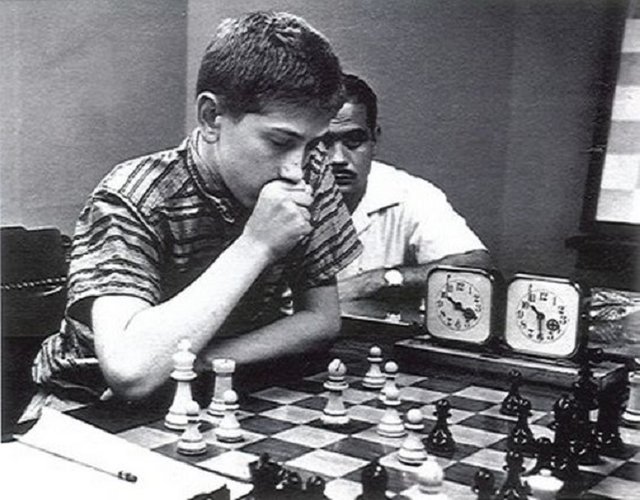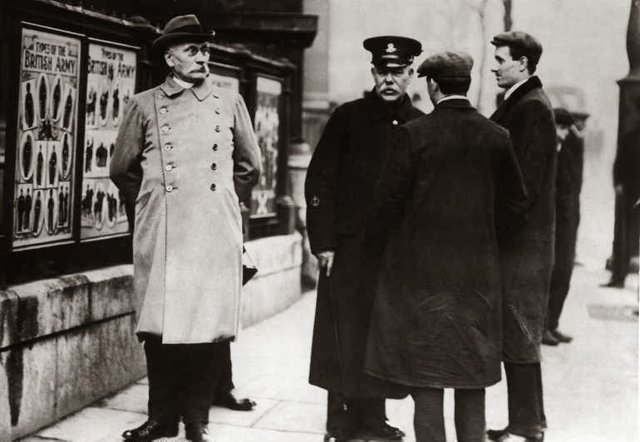TODAY IN HISTORY- OCTOBER 17: 13 Years Old Bobby Fischer Wins the Game Of The Century | A shoemaker Leads German Soldiers in a Robbery
13 Years Old Bobby Fischer Wins the Game Of The Century - 1956
Today, exactly 61 years ago, a 13-year-old boy Bobby Fischer played a chess game against 26-year-old Donald Byrne at the Rosenwald Memorial Tournament in New York on 17 October 1956.
In this game, Fischer (playing black) is amazingly brilliant, with such beautiful play that it was called the "Game of the Century".
Byrne (playing white), after a standard opening, makes a minor mistake on move 11, moving the same piece twice (wasting time).
Fischer pounces, with strong sacrificial play, culminating in an incredible queen sacrifice on move 17. Byrne captures the queen, but Fischer more than compensates by taking any other pieces.
The ending is an excellent demonstration of pieces working together to achieve a checkmate. Thus, Fischer defeated Byrne and won a Brilliancy Prize that made many consider him the greatest chess player of all time.
Fischer was an eccentric genius and a record-setting chess master who became the youngest player to win the U.S. Chess Championship at 14, the first American-born player to win the World Chess Championship, and the youngest grandmaster up to that time.
He first learnt the game of chess at age 6 and was believed to have an I.Q. of 181.
Here is a complete statement about him and his qualities.
“The most individualistic, intransigent, uncommunicative, uncooperative, solitary, self-contained and independent chess master of all time, the loneliest chess champion in the world. Bobby Fischer is also the strongest player in the world. In fact, the strongest player who ever lived” – Larry Evans.
He died of renal failure in Iceland on January 17, 2008 at the age of 64.
A shoemaker Leads German Soldiers in a Robbery - 1906
Wilhelm Voigt, a 57-year-old German shoemaker, criminal and impostor, who became famous in 1906 when he poses as an army officer and leads a team of soldiers to help him steal more 4,000 marks from a municipal treasury.
He acquired the uniform of an officer for the German Army and dressed to appear as if he were an important person. He then went to Berlin where he approached a group of about 20 German soldiers. At the time, they were known to follow the authority almost blindly so when Voigt approached wearing an officer’s uniform they all jumped to attention.
Voigt, who had criminal backgrounds, humiliated the German army by exploiting their blind obedience to authority, even false authority and obtaining them to greatly help in his audacious robbery. Voigt ordered the men to walk the 20 miles to Kopenick where he placed the men outside the mayor's office. He told the soldiers that the mayor was under arrest, so they immediately stormed the building and took him to detention.
It was at this point that Voigt went in and demanded to see the cash box that had about 4000 marks inside that he conveniently placed in his pocket without anyone seeing.
He then ordered the men to place the mayor in a car and hand him over to the police in Berlin. Somewhere along the way Voigt gave the men the slip and disappeared with money.
However, still ignorant of what was really happening, the soldiers delivered the mayor to the police station where a couple hours went by before anyone realized that it was all a hoax.
This heist etches his name into the history books and even a play about him called The Captain of Kopenick and is even referred to as a German “fairy tale” was made.
The police tracked and arrested him nine days later, and he was sentenced to four years in prison. But he turned out to be such a likable character (and popular hero), thus he was pardoned after serving less than two years.
THANK YOU FOR READING AND MAY THE ODDS BE EVER IN YOUR FAVOR
Sources:



Mmmmmmmm history always there to remind us of the past. thanks for sharing these great histories @evelyniroh